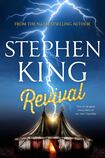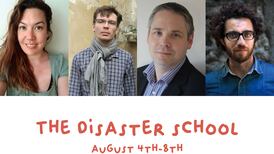
I recently caught Terror and Wonder: The Gothic Imagination, the British Library's new exhibition, which is a treasury of dark delights for those of an imaginative bent. One of its most striking exhibits is the manuscript of Mary Shelley's Frankenstein, or the Modern Prometheus, with editorial suggestions from her lover and, later, husband, the poet Percy Bysshe Shelley.
The manuscript resembles the composition homework of a gifted teenager – which it is, in a way: the book was written in response to a challenge to write a ghost story from Lord Byron, with whom the Shelleys were briefly sequestered at Villa Diodati, by Lake Geneva, and Mary was only 18 at the time.
To read Frankenstein is still, nearly 200 years later, to be confronted with an extraordinary work of the imagination, one that is both familiar in its themes yet strange in its execution. So much of what we now associate with the Frankenstein story – laboratories, lightning storms, a lumbering monster, peasants armed with pitchforks and flaming torches – comes not from Shelley's book but from Hollywood, most famously James Whale's 1931 film, with Boris Karloff.
Frankenstein is also, despite the occasional creakiness of its prose and its reliance on contrivance, deeper and odder than any film yet made of it, and divided critics when it was first published anonymously, in 1818. The reviewer in the British Critic described it as perverted; Blackwood's Edinburgh Magazine praised Shelley's "original genius".
Mary Shelley is one of a number of authors to whom Stephen King has dedicated his latest novel, Revival. It shares something of Shelley's fascination with galvanism, the stimulation of muscles through the use of electric current. This is what Luigi Galvini, who first investigated the effect on dissected creatures in the late 18th century, termed "animal electricity", believing it to be distinct from any other form of electrical power.
In fact the list of authors on King's dedication page would provide a useful primer to any student seeking to establish the range of his horror influences: Bram Stoker, HP Lovecraft, Clark Ashton Smith, Donald Wandrei, Fritz Leiber, August Derleth, Shirley Jackson, Robert Bloch and Peter Straub (King's occasional coauthor). In larger letters than the rest is Arthur Machen, athor of The Great God Pan, to which King pays particular tribute.
A number of these writers are included in Horror Stories: Classic Tales from Hoffman to Hodgson, a superb collection of short fiction edited by Prof Darryl Jones of Trinity College Dublin. (I should say that I am mentioned in the acknowledgments – largely, I suspect, because I not only openly admit to enjoying horror literature but also, like the fat boy in Dickens, am not above trying to make the flesh creep myself.)
At the risk of drawing the ire of fans of weird literature, I’m happy that the anthology omits Lovecraft, a writer whose imaginative reach largely exceeds his literary grasp and whose writing style can best be summed up as “Words are unable to capture the horror of what I glimpsed, but I’ll have a go . . . ”, leading adjectives to pile up uselessly.
Lovecraft's influence on genre writers, especially Americans, lies in his conception of horror on a cosmic scale, referred to as the Cthulhu Mythos, named after the demonic arch-entity in the author's vision of a universe ruled over by malevolent beings of grotesque appearance. As a consequence, a number of writers have created Lovecraftian works that are far superior to the originals. King's Revival falls into this category.
Horror within and without
Revival
combines the two types of horror identified by King in
Danse Macabre
, his 1981 study of the genre: the “outside evil”, in which the horror is predestinate and beyond the control of its victims, such as Lovecraft’s eldritch monstrosities; and the “inside evil”, which results from acts of free will, such as the hubris that leads Victor Frankenstein to breach the ultimate taboo in his quest for scientific knowledge.
In Revival a man named Jamie Morton traces the increasingly malign influence of the former preacher Charles Jacobs upon his life. When we first meet Jacobs he is a committed Methodist minister, with a young wife and son and a delight in electrical gadgetry. But life deals Jacobs a bad hand, and causes him to doubt the existence of God, leading his interest in electricity to develop in a deeply sinister direction.
The novel is King’s shortest and tightest in years. Although it still takes its time in reaching its climax, the journey is hugely pleasurable, especially if one has a reasonably high tolerance for disquisitions on music and the joys of playing in bar bands. The final chapters are as tense and unsettling as anything King has lately produced.
Revival also takes a cue from Machen's mystical fascination with hidden knowledge and his belief that if one could just pull back the veil of the ordinary then a more mysterious world might be revealed. But the nature of that secret world in King's book has more in common with the explicitly nightmarish creations of Lovecraft's work.
I’ve already used the word “horror” six times in the preceding paragraphs, for a purpose. There is a tendency to assume that horror, ghost and supernatural stories are all one and the same, but in fact a tale of ghosts or the supernatural may not be horrific.
The horror genre is the only one to be named after an intense feeling with largely negative connotations: to be horrified is to be disgusted, even repelled. This is why supermarkets avoided stocking horror fiction for many years and why booksellers hid their horror sections at the back of the shop, there to be discovered by largely amiable young people with only mildly concerned parents.
The genre had a hint of the unpleasant, the illicit, the shameful, but that was the point. The clean, glittering vampires of the Twilight novels are the stuff of romance, but Bram Stoker's Dracula – a child killer, a pollutant, a thing of dirt and rats – is a true creature of horror.
Darryl Jones, in his introduction to Horror Stories, examines the distinction between the metaphysical dread of terror, and the shock and revulsion of great horror. The former relies on a degree of concealment and uncertainty. So WF Jacobs's The Monkey's Paw, which goads the reader into conjuring an image of what may be waiting on the other side of a door, might more correctly be termed a tale of terror.
The effectiveness of a piece of horror, though, depends on revelation, on what is seen and felt. As King says in Danse Macabre, "I recognize terror as the finest emotion . . . and so I will try to terrorize the reader. But if I find I cannot terrify him/her, I will try to horrify; and if I find I cannot horrify, I'll go for the gross-out. I'm not proud."
The Silence of the Lambs
Last month I was present at a discussion of horror fiction during which an interesting question was asked: what is a “tasteful” horror story? The only answer I could come up with is that a tasteful horror story is one nobody would want to read.
Taste has no part to play in horror. Rather, like physical pain, it's a question of what one is capable of enduring. At its most effective, horror fiction is tied up with the fragility of the human form, with injury, pain and, ultimately, death. In that sense all great horror is body horror; it's why Thomas Harris's The Silence of the Lambs, with its details of mutilation and cannibalism, is not a thriller but a horror story.
This exploration of the human potential for physical and psychological suffering is a recurrent theme in Horror Stories. William Maginn's The Man in the Bell has no supernatural elements but concerns itself with the maddening effect of being trapped beneath a massive church bell. The alchemist in Nathaniel Hawthorne's The Birth-Mark is obsessed with a small red mark on his wife's cheek, the only flaw in her otherwise beautiful appearance, and determines to rid her – and himself – of it. The already delicate narrator of Charlotte Perkins Gilman's The Yellow Wall Paper is tipped into insanity by the figures she perceives in the patterns on the walls.
The body, these stories warn us, is a frail construct, and will betray us all in the end.
Even the supernatural manifestations in horror fiction have a physical presence. They are not wispy, ethereal beings: they can be smelled, tasted, touched – and, most disturbingly, they can touch us in turn.
They are malignant and potentially lethal, like the mysterious, sexually predatory Mynher Vanderhausen in Sheridan Le Fanu's Strange Event in the Life of Schalken the Painter, who resembles "the corpse of some atrocious malefactor, which had long hung blackening upon the gibbet", or the wet, sticky terrors of much of MR James's fiction – manifestations, perhaps, of that author's sublimated sexual urges.
I've long felt that the effectiveness of a piece of horror fiction is inversely proportional to its length. The best of these stories are also usually among the shortest. Similarly, many of the writers whom King lists at the start of Revival produced their best work in the short form. Horror is a difficult sensation to sustain, both for reader and for writer. Too much of it is wearing, and requires ever increasing doses to work the same effect. Like galvanism itself, horror provides the best results when delivered in the form of a short, sharp shock.
John Connolly's latest novel is The Wolf in Winter












